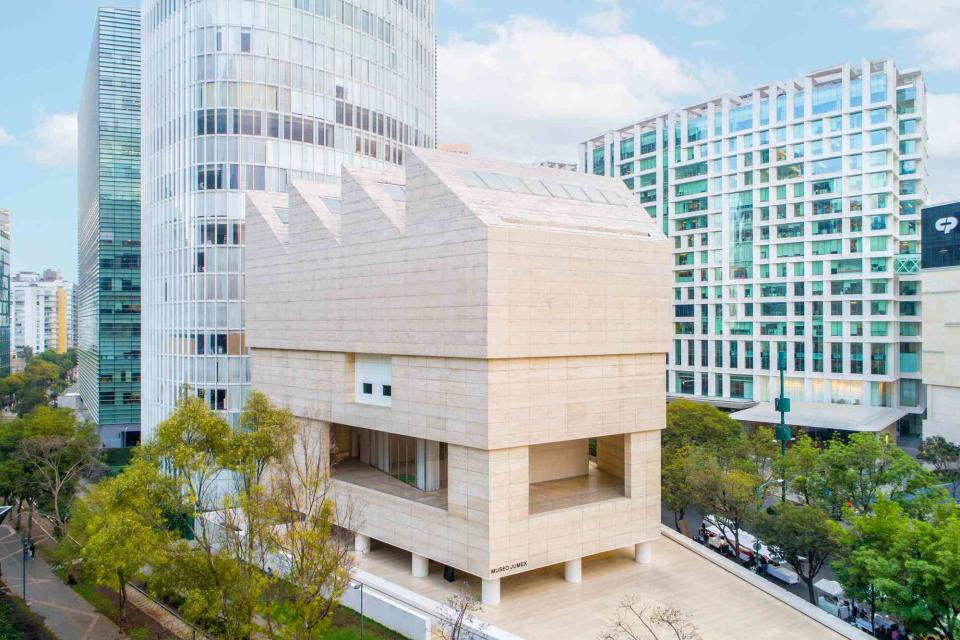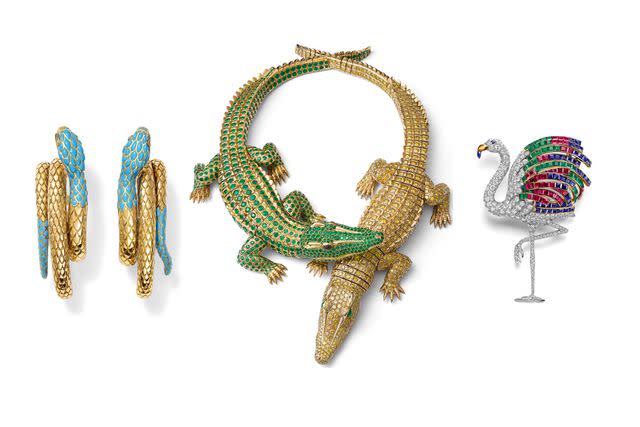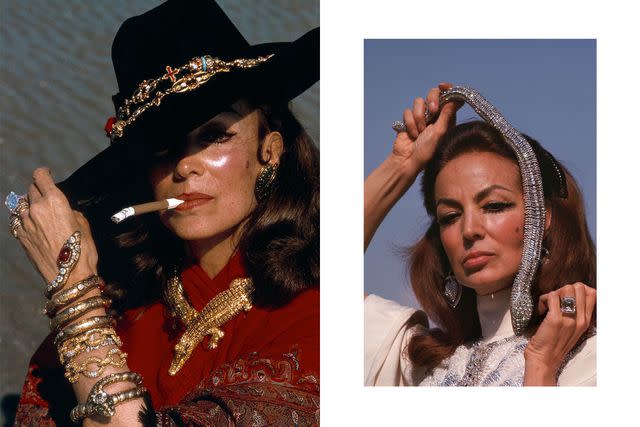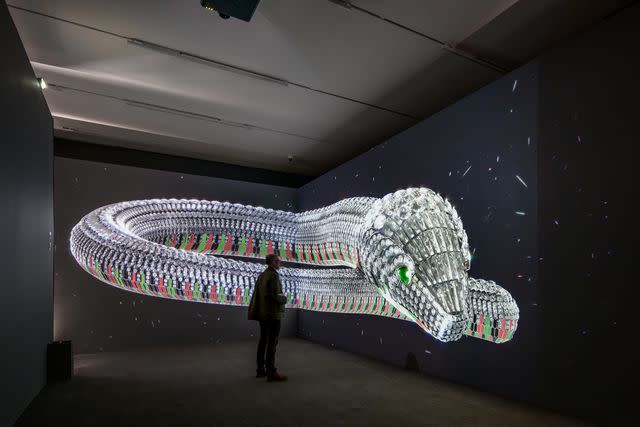This New Cartier Exhibit in Mexico City Has 160 Pieces That Trace the Brand's History — Including a Necklace With 2,473 Diamonds
- Oops!Something went wrong.Please try again later.
The iconic jeweler is spotlighting its ties to Mexico in a new exhibit at Museo Jumex.

Courtesy of Museo Jumex
After 24 years, the Cartier Collection has returned to Mexico.
Cartier is showing off a striking new exhibition — "Cartier Design: A Living Legacy" — at Mexico City's Museo Jumex. Curated by art critic Ana Elena Mallet, the exhibit features more than 160 objects that trace Cartier’s design evolution across its 176-year history and the luxury fashion house's ties to Mexico. Cartier Collection is the famed French maison's archive of significant pieces that dates back to 1847, the year the brand was founded.
The exhibit is designed by Frida Escobedo, a noted Mexican architect currently renovating a wing at The Met in New York City. She transformed the space at Museo Jumex into a temple-like environment that pays homage to Mexico’s historic pyramids. Her primary inspiration was the Tenayuca — a pre-Columbian Aztec double pyramid located about 10 miles outside of Mexico City. The walls of the exhibit are lined with 950 custom panels that echo the hewn-stone walls of the pyramids and jewels are displayed in dark windows throughout the gallery. The spotlights in the dimly lit rooms firmly place the focus on the jewelry. As you walk through the space, it feels as if you are peering into a secret treasure room in one of the pyramids, discovering new jewels at every turn.
To curate the exhibit, Mallet traveled to Paris to meet with Pierre Rainero, Cartier's image, style, and heritage director. They delved into Cartier's archives, which include more than 3,000 items.
Mallet told Travel + Leisure there are not many Mexican and Latin American influences in the Cartier Library, even though it was a source of inspiration for designers in the early 20th century. But she did discover incredible special-order pieces like a platinum and diamond pyramid clip brooch from 1935 that opens the show.
“The brooch is amazing. We don’t know where the inspiration came from, but it’s obviously Latin American [influenced],” Mallet said. “The piece relates to the volume of the Thirties of Cartier — the cut of the diamonds, and all those innovations — but also grounds this idea of seeing non-Western cultures and trying to approach design through those cultures."
This piece sets the tone for the exhibit. Even in its earliest days, Cartier looked for inspiration worldwide, translating historic places and objects into gorgeous jewelry with the maison’s indelible design signature. This global exploration also includes pieces inspired by Persia (modern-day Iran), India, Egypt, China, and Russia.
The exhibit is split into five units, each with a different theme: “The Early Days and the Birth of a Style”; “Universal Curiosity”; “Jeanne Toussaint’s Taste”; “Wearing Beauty and Measuring Time”; and “María Félix and Icons of Elegance.” There are fabulous tiaras, golden purses, intricate clocks, historic watches, and plenty of pieces with significant stones. There are also plaster casts, drawings, and photos.

Nils Herrmann © Cartier
Two exhibits, in particular, pay homage to pioneering women. “Jeanne Toussaint’s Taste" honors Jean Toussaint, who was named creative director of Cartier Paris in 1933. (Her tenure at the company started in 1913 and ended with her retirement in 1970.) This room highlights her unusual designs, which pair interesting design inspiration, like a fabulous flamingo brooch, with unexpected materials, including bracelets that pair rock crystal with diamond.
The exhibit culminates with “María Félix and Icons of Elegance," which is a tribute to the legendary Mexican actor and singer María Félix. It features jewelry from Félix’s personal collection. She was known for her bold, flamboyant style, and she worked directly with Cartier to design several of her most iconic pieces. “She was super important for Cartier, but Cartier was really important for her to develop her style,” Mallet said. “People still relate Cartier in Mexico to María Félix and María Félix to Cartier.”

© Lord Snowdon; © Ignacio Castillo
Félix’s ethos may be best described as “more is more,” as archival images show her dripping in yellow gold and diamond jewelry, stacking bracelet after bracelet on her arms. The exhibit includes two of her most famous special orders: the Crocodile necklace and the Snake necklace.
The Crocodile necklace, made in 1975, features two interlocking crocodiles, both crafted from yellow gold and set with gemstones — one is covered with 1,060 emeralds and rubies; the other with 1,023 yellow diamonds.
The Snake necklace, commissioned in 1968, is no mere serpent. The necklace looks more like a sculpture than a wearable jewel, with 2,473 diamonds that reportedly took two years to source. It weighs over a pound and is crafted from platinum with diamond scales and a diamond-set head with brilliant emerald eyes. Its underbelly is covered with red, green, and black enamel. The necklace moves fluidly, a feat of engineering by Cartier’s master jewelers.

Installation view Cartier Design: A Living Legacy. Museo Jumex, 2023, Photo: Moritz Bernoully.
“The María Félix pieces do resonate in a very specific way here that’s very special," Rainero told T+L. "They’ve never been displayed in such a unique way. They look alive, and that’s really both the will of María Félix and Cartier to achieve that.”
It’s nearly impossible to grasp the heft and scale of these pieces without seeing them in person — and that’s reason enough to book a trip.
"Cartier Design: A Living Legacy" is open until May 14, 2023. For more information, visit fundacionjumex.org.
For more Travel & Leisure news, make sure to sign up for our newsletter!
Read the original article on Travel & Leisure.

